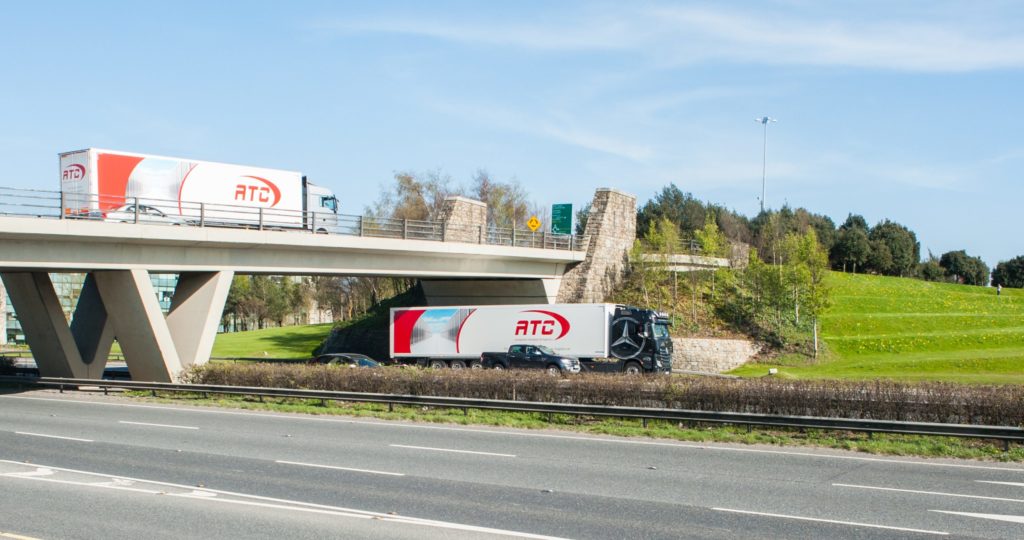
Last year, I wrote a blog on the trends that were predicted for the supply chain and logistics industry in 2020 – Digitisation of Supply Chain and Logistics. While none of us could have predicted the enormity of a global pandemic and the endless trials and tribulations of Brexit, many of the trends that I did note still stand today and will prevail in 2021.
1. Internet of Things (IoT):
“Incorporation of IoT in the logistics sector ensures smooth, efficient, and transparent operations. Since it doesn’t require human intervention, logistic companies can ensure alignment in tasks by integrating IoT.” Industrywired.com
I spoke previously on how mobile technology is enabling our industry to have a birds-eye view into every link in the supply chain from warehouse activity to the final mile which offers countless benefits to our operations and our clients.
In 2021, IoT devices are set to become smaller and more accessible, and we should expect to see further innovation as the demand for bespoke solutions within our industry ramps up.
We have witnessed first-hand how our real-time technologies have made our operations more efficient and helped us maintain our customers’ supply chain’s integrity. One of our values is innovation, as we are always open to adopt new technologies that can re-define our services and look forward to what is coming down the chain.
2. Blockchain:
In line with improvements in IoT, experts also say that the supply chain and logistics industry will utilise more blockchain technology in 2021. Blockchain provides a safe, speedy and transparent way for payment to be transferred to supply chain partners upon job completion.
Deloitte support this trend saying that “Using blockchain in the supply chain can help participants record price, date, location, quality, certification, and other relevant information more effectively to manage the supply chain.”.
3. Artificial Intelligence (AI):
Developments in AI and machine learning continue to advance for our industry. Gartner’s report stated “37% of organisations had implemented AI by the end of 2019 and in 2020 their noting improvements in their supply chain and productivity” as a result.
A large part of what we do is prepare plans to mitigate any potential problems on our driver’s journeys from point A to point B. AI has been hugely helpful to our operations. For example, we can use AI to supply weather forecast reports and traffic conditions ahead of a journey so that our transport planners can instruct our drivers to take an alternative route if necessary.
“By crunching data from past operations, AI algorithms can perform basic operations automatically. This saves a large amount of time and eliminates the possibility of human error, thus making the operations more efficient. It also redirects the human capital to perform more complex tasks.” Says supplychainbrain.com
Forbes also predicts that with the introduction of 5G and more and more devices throughout the supply chain, an increased level of data streams will be produced sending signals in real-time to trigger various events making the industry more efficient and effective.
4. Additional Warehouse Facilities:
To ensure logistics companies meet the demand for last-mile and reverse logistics services; experts say they will require additional warehousing facilities located along the motorway and closer to the main cities.
At ATC, we recognised that with Brexit and other related factors, we needed to increase and spread our warehouse facilities across Europe to be more agile and protect our clients’ quality of service. Late last year, we announced the construction of our new European HQ just outside Dublin. We will keep you updated on this project along with our other Europe-wide location plans over the coming months.
5. Sustainability
Even though COVID-19 has dominated the news headlines, Ashurst.com notes that “the drive towards net-zero will play a significant role in future logistics both in the construction of warehouses and for operators.”
As part of our commitment to making our industry carbon neutral, our new building will include many environmentally sustainable features including; on-site solar PV, rainwater recycling heat pumps and heat recovery systems.
All of our vehicles also adhere to the latest Euro standards and are equipped with an Eco Driving systems to monitor driver style for inefficiencies that could affect carbon emissions.
Protecting the environment is something that we’re very passionate about. We have written other articles on what we and the industry are doing to reduce our carbon footprint that may be of interest to you.
https://www.atc-logistics.com/safeguarding-our-environment/
https://www.atc-logistics.com/zero-emissions-drive-in-logistics-industry/
While this is still a challenging time for our industry as we navigate through COVID-19, Brexit and trying to be a more environmentally friendly industry, some inspiring things are happening too that we should feel optimistic about.
Keith Young
Managing Director


